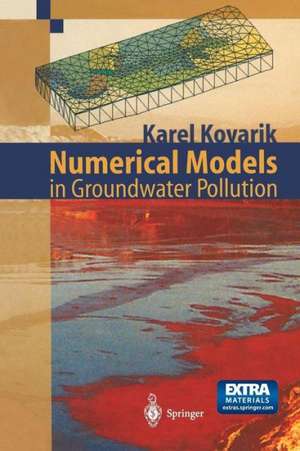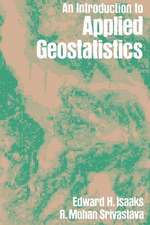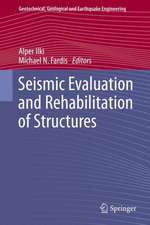Numerical Models in Groundwater Pollution
Autor Karel Kovariken Limba Engleză Paperback – 3 oct 2013
| Toate formatele și edițiile | Preț | Express |
|---|---|---|
| Paperback (1) | 637.78 lei 6-8 săpt. | |
| Springer Berlin, Heidelberg – 3 oct 2013 | 637.78 lei 6-8 săpt. | |
| Hardback (1) | 642.03 lei 6-8 săpt. | |
| Springer Berlin, Heidelberg – 14 apr 2000 | 642.03 lei 6-8 săpt. |
Preț: 637.78 lei
Preț vechi: 750.33 lei
-15% Nou
Puncte Express: 957
Preț estimativ în valută:
122.04€ • 130.50$ • 101.75£
122.04€ • 130.50$ • 101.75£
Carte tipărită la comandă
Livrare economică 18 aprilie-02 mai
Preluare comenzi: 021 569.72.76
Specificații
ISBN-13: 9783642630989
ISBN-10: 3642630987
Pagini: 240
Ilustrații: IX, 224 p.
Dimensiuni: 155 x 235 x 13 mm
Greutate: 0.35 kg
Ediția:Softcover reprint of the original 1st ed. 2000
Editura: Springer Berlin, Heidelberg
Colecția Springer
Locul publicării:Berlin, Heidelberg, Germany
ISBN-10: 3642630987
Pagini: 240
Ilustrații: IX, 224 p.
Dimensiuni: 155 x 235 x 13 mm
Greutate: 0.35 kg
Ediția:Softcover reprint of the original 1st ed. 2000
Editura: Springer Berlin, Heidelberg
Colecția Springer
Locul publicării:Berlin, Heidelberg, Germany
Public țintă
ResearchCuprins
1 Introduction.- 2 Basic Equations of Groundwater Flow.- 2.1 Basic Principles of Hydrodynamics.- 2.2 Flow Through the Saturated Zone.- 2.3 Flow Through the Unsaturated Zone.- References.- 3 Basic Equations of Transport of Pollutants in Porous Media.- 3.1 Miscible Displacement.- 3.2 Transport of Immiscible Pollutants.- References.- 4 Weighted Residuals Method.- 4.1 Basic Terms and Definitions.- 4.2 Weighted Residuals Method.- 4.3 Weak Solution.- 4.4 Inverse Formulation.- 4.5 Numerical Methods Used in Problems of Groundwater Hydraulics.- References.- 5 Mathematical Models of Groundwater Flow.- 5.1 Groundwater Flow in the Saturated Zone.- 5.2 Flow in Unsaturated Zone.- References.- 6 Mathematical Models of Transport of Miscible Pollutants.- 6.1 Basic Methods.- 6.2 Equilibrium Sorption.- 6.3 Non-Equilibrium Sorption.- References.- 7 Comparison of Properties of All the Methods.- 7.1 Groundwater Flow Models.- 7.2 Models of Transport of Pollution.- 8 Examples of the Use of Models in Practice.- 8.1 Models to Determine Groundwater Resources.- 8.2 Models to Assess Different Influences on Groundwater.- 8.3 Remediation Models.- References.- 9 Description of Software Included in This Book.- 9.1 BEFLOW System.- 9.2 System UNSDIS.- 9.3 Examples.- References.
Caracteristici
Brief description of the theory of groundwater flow and transport Comparison of used numerical methods, their advantages and disadvantages Computer programmes and source code with examples Includes supplementary material: sn.pub/extras












